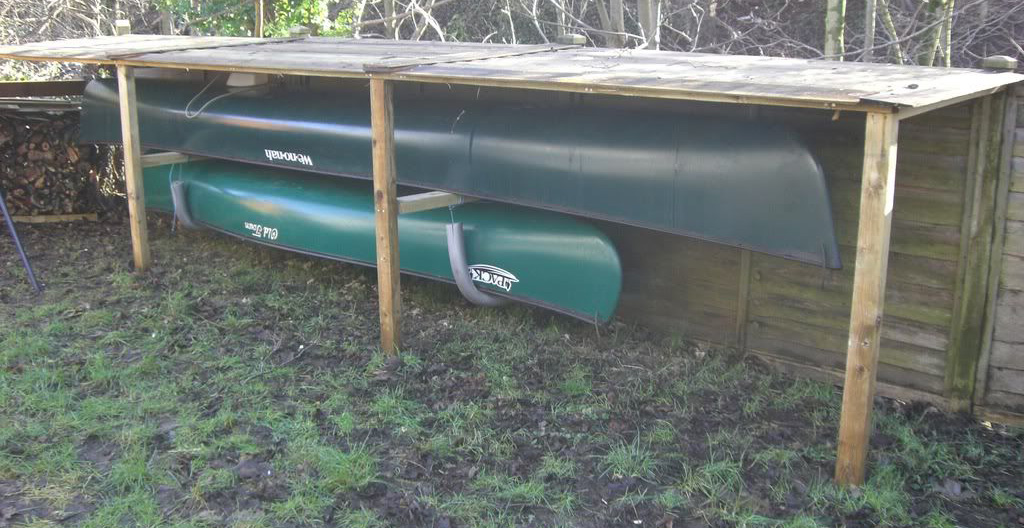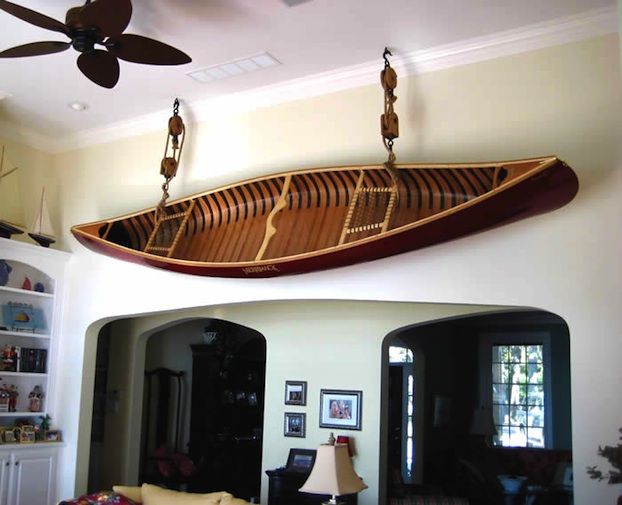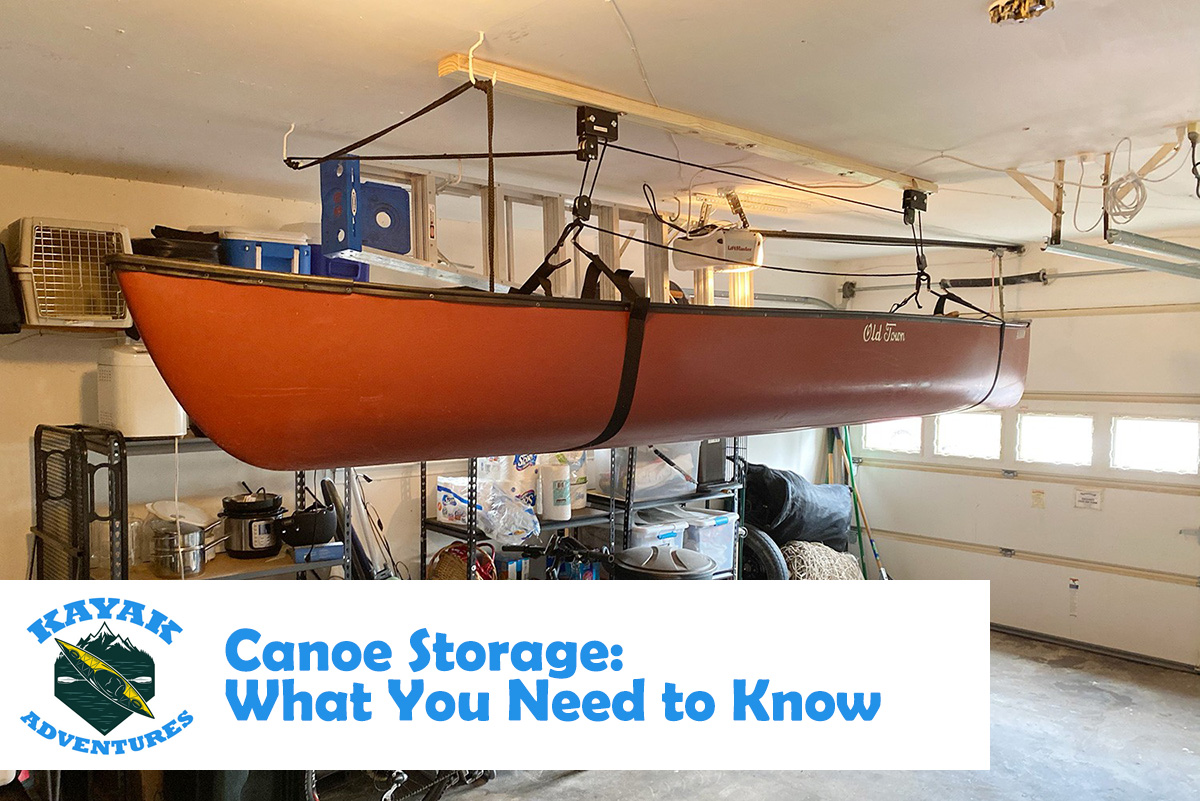Canoe Storage: What You Need to Know
Canoe storage is a big topic for many people. Canoes are typically stored outdoors, and the equipment needed to do it correctly can be expensive. In this article, I will go over some helpful canoe storage ideas that will help you keep your investment in good condition while still being cost-effective.
If you have a small canoe, there are inexpensive ways of storing it indoors or on an upper-level porch away from animals and children who might damage it by playing with it or knocking into it accidentally.
Some tips for storing a canoe

-
Canoes need to be stored in an upright position since even small changes can compromise the construction and materials of your boat.
-
Canoes should never be left upside down or on their keels. The keel is a rib within the hull, without which the canoe would leak at many spots and become utterly useless. It also acts as internal ballast for better load capacity and stability in open water.
-
Upright storage positions allow boats to absorb less moisture from their surroundings as water droplets simply run off rather than sitting with nowhere to go inside a cradled vessel too often surrounded by dirt or grass that may contain small worms or seed pods that will eventually rot into patches that weaken areas of the craft’s fiberglass hull.
-
Canoes stored on their flat bottoms stand a good chance of cracking, as repeated contact between the inside of the canoe and some foreign objects such as rocks will grind away at the hull’s integrity over time.
-
Canoes that are left outside even mounted on car racks or trailers, need to be turned upside down (keel up) for storage to keep these damaging elements from getting a foothold, although this is only necessary during the off-season.
-
Canoes should also never be stored on slopes or near fireplaces or other sources of heat as the warped hull will swell and cause problems after time, especially if it remains wet.
-
Canoe builders do not recommend storing your vessel for extended periods in a location where the temperature changes radically, such as an attic or garage. Canoes made of fiberglass can warp and mildew when left outside in cold weather without frequent inspections to make sure they haven’t been damaged by shifting or frost heave (the result of expanding ice beneath boats that causes them to lift and break over time).
-
Canoes made of other materials such as wood should also be kept away from the elements to avoid damage.
How to store a canoe?

Canoe storage can be tricky. Canoes are large and bulky, which means you’ll need to make sure your canoe storage area is big enough to store it properly.
Canoes should always be stored off the ground and inverted. This means that you need a rack system for your canoe, to safely store it in a way that prevents damage during its storage period. Canoe Storage Racks are designed just for this purpose, but many people find that they can build their own if desired.
Racks come in several different designs, with the most common being four upright poles with X-shaped crossbars attached across them at two levels to give you adjustable hanging points for your boat. These racks usually include hooks or some sort of strap system around the hull of the boat to secure it firmly in place while protecting its surface from abrasion by carabiners or used to hang it up.
Canoe storage racks made from wood tend to be the most inexpensive, but they don’t stand up to weather well and need to be treated regularly with a protective coating of varnish or paint. Canoes stored outside in the elements should be covered as well for additional protection.
Canoe covers are used in much the same way as car covers if you’re familiar with those. They come with elasticized openings around cord loops that slip overlocking pegs attached to your boat’s gunwales so that everything is pulled snugly into place. These work very well at protecting from sun damage, dust, dirt, and even moisture if you don’t live in an area where ice or snow might build up on your boat.
Some people choose to put their boats into the water every day so they’ll stay wet and won’t form any mold underneath them while others prefer the less time-consuming option of storing them fully dry until ready for use again. The right type of canoe rack will depend on the amount of space you have available for storing your canoe. No matter what type of rack you choose to store your boat, there are a few basics that should be followed:
-
Canoes stored outside should be protected from the weather and direct sunlight.
-
Canoes should be stored upright to prevent warping.
-
Canoe racks and boat storage units can be adapted to any size vessel.
-
Canoe storage racks must either be bolted to the floor or anchored to a wall stud to provide both security and safety.
-
Canoe storage racks must either be bolted to the floor or anchored to a wall stud to provide both security and safety.
-
Boat storage racks and canoe carrier blocks work best in dry conditions, while inflatable kayaks and paddleboards are ideal for damp storage.
-
Canoe storage racks can be installed on both indoor and outdoor walls, but units designed for the outdoors usually come with waterproof coating and rustproof hardware.
-
Canoe storage racks for your garage or basement should be built from high-quality material capable of withstanding any weight. This ensures the rack will hold the boat safely over time without sagging, bending, breaking, or coming apart at the joints. Canoe racks should be mounted 16 to 24 inches above the ground for optimal stability.
-
Canoes stored on top of wooden garage rafters pose a serious risk of falling and injuring someone, especially if they slide off onto the floor below.
-
Canoe racks hung from living room walls are no less dangerous. Canoe racks manufactured from metal or wood may not be suitable for certain types of materials used in the construction of your home, so make sure to check this before installation.
-
Canoes should always be stored on a Canoe storage rack with padded cradles that can support them evenly and prevent scratching.
Outdoor canoe storage
Canoe storage hangers are a great way to keep your Canoe’s hull safe. Canoes are not just pieces of wood, they have several fittings that can be damaged if not taken care of properly. Canoe Storage Hangers protect these fittings from harm by providing them with a soft place to lay during the initial time away from water.
The canoe storage hanger pads will also provide support for the Canoe’s hull to avoid unsightly dents or warping. Canoe hanging racks can also reduce staining and damage done to both the Canoes’ Exterior and Interior.
These days, there are quite a few choices available when it comes to finding Canoe hanging racks but before you go shopping, it’s important to know what Canoe storage hangers are made of. Hanging Canoe racks come in three different materials.
-
Plastic Canoe hanging racks can crack if they’re not taken care of properly.
-
Metal Canoe hangers rust easily rendering them unusable.
-
The best Canoe storage hanger material is Wood because Wood is naturally weatherproof. However, despite being an excellent choice for outdoor use, Wood Canoe racks may be too large or cumbersome for indoor.
-
Fiberglass Canoes should only be stored inside otherwise they could easily scratch or scuff other boats in the Canoe hangers with sharp points on their bows (front ends). For fiberglass Canoes, indoor Canoe storage hangers made out of plastic are an option; however, Canoes made out of plastic, in general, should not be left outside during the winter. Canoe storage hangers that are weather-resistant will typically use Canoe racks made of either wood or metal to provide Canoes with good support when they’re not in use.
How do I store my canoe for winter?
If you live in an area where extreme temperatures are common, it is also a great idea to store your canoe indoors during the off-season or winter months. Doing this will help prevent its surface from getting damaged by rain and ice buildup that can damage a canoe’s outer fiberglass hull if there’s no protection from long-term weather conditions. There are several different options available for storing a canoe indoors, but most people find that Canoe Ceiling Storage Systems offer the best all-around protection available since they keep your boat up off the ground and out of heavy traffic areas while still being able to stack additional boats on top of them safely without worrying about damaging any.
Conclusion
- Canoes can be stored in a variety of ways, but they all have their benefits and drawbacks
- Canoes should not be stored outdoors or in direct sunlight because the sun will deteriorate the wood and the paint
- Canoe storage indoors is best if you don’t have a carport, or other outdoor space to store your canoe
- If you do have an outdoor space such as a garage, use hooks to hang your canoe on the wall (be careful not to scratch it against the wall)
- Canoes should only be stored in water if you are floating, otherwise, it will take too much moisture out of the air and your canoe will warp
- Canoe storage is important to keep your boat in good, sound operating condition.
Can you hang a canoe?
Yes, of course, hanging a canoe is easy! Generally they're considered safe and convenient to hang with the hull facing down, as hanging with the deck up will cause warping of the deck's fiberglass coating.
How long can a fiberglass canoe last?
Fiberglass boats can last a long time if properly cared for. The fiberglass itself will not fracture, but it may as a consequence of external factors.
Can you leave a canoe outside in winter?
No, canoes are not made to withstand winter weather. Canoes should be stored indoors during the cold months.

